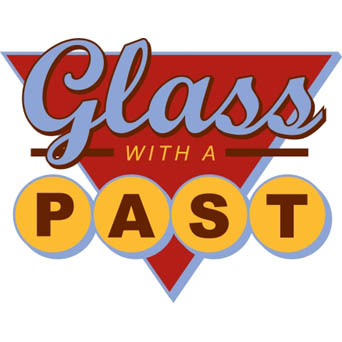 Welcome to Q & A Monday! Where we answer reader questions about all things recycled glass. I’ve removed personal details for privacy reasons, if one of these questions was yours and you’d like attribution, let me know. If you have a question, send it over!
Welcome to Q & A Monday! Where we answer reader questions about all things recycled glass. I’ve removed personal details for privacy reasons, if one of these questions was yours and you’d like attribution, let me know. If you have a question, send it over!
- Q: Hi Jodi
Thank you for your newsletter, it is great and very inspirational.
Do you use a template when carving the glass? How do you put the design onto the glass for carving as the glass is continuously wet? - A: that is a very good question. I’m assuming that we are talking about carving with a dremel tool and diamond bits vs. kiln carving. :-)So, I’ve tried these things:drawing on the pattern with sharpie and then coating it with chapstick or lipgloss. Works okaybuying a ‘professional’ Sharpie marker, the solvent is different, so it supposedly stays on wet, oily or dusty surfaces. Works pretty darn well.wax glass marking pencil. NopeI’ve just purchased some oil based paint pens that are supposed to be indestructible, but haven’t had time to try them.When I’ve done a lot of repetitive carving, I’ve printed the template out on my laser printer on plastic film and put it under the glass. Because it’s plastic, it doesn’t deteriorate in water and I can see what I’m carving. I did a large order of several hundred candy dishes that way.I could see that working with a sharpie drawing on plastic film as well. The plastic will hold the ink better than the glass will.
Conclusions:
for one off templates, use a professional grade Sharpie or oil paint pen
for multiple carvings, use a plastic film template under the glass.Hope that helps!
- Q: Good Morning! Thanks for the email/newsletter. I have a question on tools. What’s the best bottle cutter you can recommend? Needs to fit up to 750ml. And, what’s the best way to make1-2 inch holes in fused bottle glass. I’m using a hand drill with a diamond/glass hole bit and some water…really hard to control and not too safe!
- A: I use a tile saw to cut bottles with now. I bought Ephraims bottle cutter way back when, but it was kinda cheesy. I quickly moved to scoring bottles freehand with my glass cutter and shocking them with a torch. Then moved to my tile saw and that’s how I cut everything now.If it were me making 1-2″ holes, I would use a hole saw, with a drill press. There are some very inexpensive drill presses (Harbor Freight) and it is a very handy tool. It’s great for making lot’s of little holes too. I put a board on the drill press platform, with a pan with water, and then I clamp all three things together so they won’t move. Then put the glass in the pan with a bit of foam underneath so I don’t drill the pan. Make sure you match the speed of the drill press with the recommended speed of the hole bit. (Usually it’s easy to change, just open the top of the drill press)Good luck! Let me know if you need photos of the drill press set up, that may not be very clear just from a description.
- Q: Read on your site how you can mix recyclded glass as long as the particle size is small. Would love to know more about this and any other metods for mixing recycled glass from various sources.
- A: You can mix recycled glass in two ways:- grind all the particles down to small pieces, pack a mold and fire. This will give you a very stone like appearance. The small size of the particles will negate the Coefficient of Expansion (CoE) and compatibility issues. Basically by making the surface area of each piece so small that if two particles pull apart, it has no effect on the overall structure.- mix the pieces at a high temperature and essentially create a new piece of glass. This works best for glass with similar CoE’s, bottle and window for example. A pot melt is a good way to do this. Keep in mind that your new piece of glass will have a CoE unique unto itself, and will not be compatible with any other pieces of glass. (I’m sure there are exceptions, this is a guideline, not a cast iron rule) Also keep in mind that this is an experimental process. You may get great results once and then many failures in a row.

I would so much like to make earrings and necklaces from bottle glass. I am having trouble cutting the bottles – I have tried a glass blade on a tile saw – not luck – too time consuming and labor intensive.